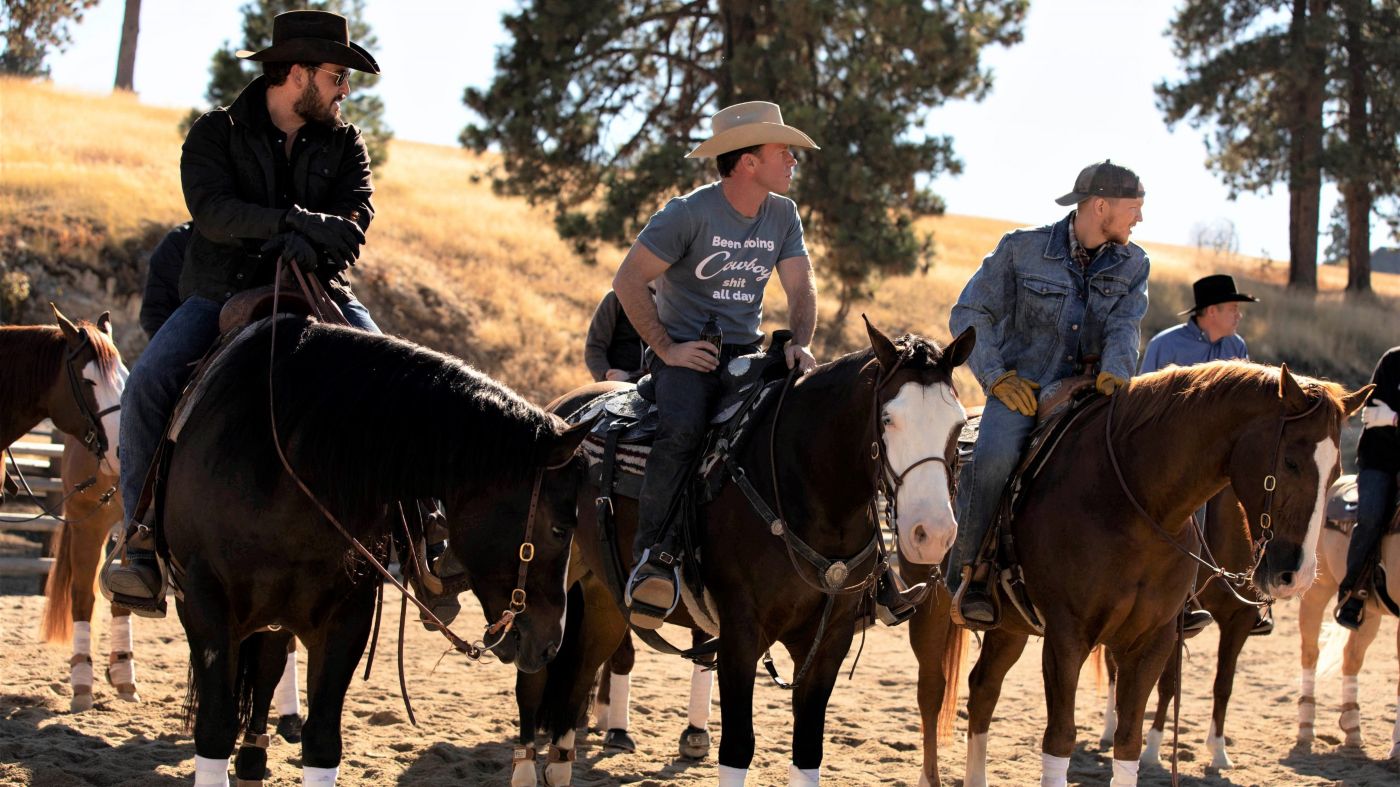Since its explosive debut in 2018, Paramount’s Yellowstone has become more than just a TV show—it’s evolved into a cultural phenomenon. At its heart, Yellowstone is a brutal meditation on legacy, loyalty, and land—three forces that crash into each other on the rugged plains of Montana. But as the show gallops toward its final season, one question looms over Taylor Sheridan’s ambitious television empire: has the franchise grown too vast, too fast?
Sheridan, the creator, writer, and visionary behind the Yellowstone universe, has been on a relentless creative stampede. What began as a single series chronicling the dynastic drama of the Dutton family has now exploded into a fully-fledged multi-series saga spanning centuries and states. The original show has already birthed spinoffs like 1883 and 1923, each weaving new layers into the Dutton mythology with fresh blood, cinematic landscapes, and gut-wrenching stakes. But with more projects on the horizon—each carrying the Yellowstone DNA—some wonder whether Sheridan’s obsession with his sprawling Western epic is heading into dangerously bloated territory.
The Yellowstone Origin Story: A Legacy Forged in Fire
At the center of Sheridan’s empire lies John Dutton III, played with thunderous gravitas by Kevin Costner. As the patriarch of the powerful Dutton ranching family, Dutton defends his land with a merciless sense of justice, pitting him against land developers, politicians, Indigenous tribes, and even members of his own family. It’s a Shakespearean war waged on horseback, and viewers couldn’t get enough.
But what gave Yellowstone its unique edge was its refusal to glamorize the American frontier. Violence, betrayal, and ethical ambiguity are baked into the very soil of the Dutton Ranch. These themes were only deepened in 1883, the series’ first prequel, where audiences met James and Margaret Dutton (Tim McGraw and Faith Hill), pioneers who trekked across the untamed West in a blood-soaked pilgrimage to what would become the Yellowstone ranch. The show was gritty, tragic, and emotionally devastating—a brutal origin tale befitting the dark legacy that followed.
1923, the next chapter, saw Harrison Ford and Helen Mirren take up the Dutton mantle in an era defined by Prohibition, cattle wars, and the looming specter of the Great Depression. This series expanded the universe even further, introducing new characters and conflicts that blurred the lines between civilization and chaos. Sheridan wasn’t just writing TV—he was building a modern Western mythology.
But how many chapters can this saga bear before the story buckles under its own weight?
A Franchise Without Fences
With at least three new spinoffs in various stages of development—including 1944, a follow-up to 1923, and a modern-day sequel tentatively titled 2024—Paramount has made it clear: Sheridan’s Western sandbox isn’t closing anytime soon. Matthew McConaughey is reportedly circling a leading role in the next flagship series, which could serve as a spiritual continuation of Yellowstone once Kevin Costner rides off into the sunset for good.
Meanwhile, there are whispers of additional side stories and location-based entries. From Texas Rangers to Native American tribal politics, Sheridan appears hell-bent on exploring every nook and cranny of the American West—past and present.

But where’s the limit?
Fans of Yellowstone have expressed mixed emotions. On one hand, many welcome the expansion of the Dutton saga, hungry for more of the morally complex storytelling that made the original series iconic. On the other hand, there’s a growing concern that Sheridan’s relentless output risks saturating the brand, diminishing its emotional potency with each additional spinoff.
The Toll of Creative Overreach
Sheridan’s workload is Herculean. In addition to overseeing the entire Yellowstone franchise, he’s also the creative mind behind Mayor of Kingstown, Tulsa King, Lioness, and Land Man. Each of these series bears his signature: gritty dialogue, fierce protagonists, and unrelenting tension. But with so many irons in the fire, some critics have questioned whether the quality of storytelling is beginning to fray.
Even Yellowstone itself has not escaped unscathed. The series’ final season was delayed amid behind-the-scenes tensions, reportedly involving scheduling conflicts with Kevin Costner. Meanwhile, as the main series stalls, its universe balloons in every direction. With 1883 and 1923 already complete or winding down, the next iterations must work even harder to justify their place in the increasingly crowded narrative pasture.
Character Clashes and Emotional Fallout
What made Yellowstone exceptional wasn’t just its sprawling vistas and baritone speeches—it was its deeply flawed, magnetic characters. From Beth Dutton’s savage intelligence (Kelly Reilly) to Rip Wheeler’s brooding loyalty (Cole Hauser), the show delivered performances that cut like a branding iron. These characters weren’t just archetypes; they were combustible forces colliding under the big sky.
Yet as spinoffs multiply, the emotional intimacy risks dilution. How many generations of Duttons can the audience truly connect with? How many battles over land and honor can we witness before they start to blur?

The success of 1883 was partly due to its contained structure—10 tightly scripted episodes with a definitive, heartbreaking conclusion. It was elegiac and finite. In contrast, the ongoing spinoffs seem less interested in endings and more focused on perpetuating a dynasty. The result? Narrative fatigue may be galloping over the horizon.
The Sheridan Formula: A Blessing and a Burden
There is no denying Taylor Sheridan’s talents. His writing channels the spirit of classic Westerns while injecting modern sensibilities around power, identity, and moral ambiguity. He is, without question, one of the most influential storytellers in contemporary television.
But every empire risks collapse under the weight of its own ambition. As the Yellowstone universe sprawls across decades and demographics, its once-clear thematic focus—land, family, legacy—may begin to fragment. There’s a fine line between world-building and world-stuffing.
Final Ride or Final Warning?
As Yellowstone approaches its series finale, Sheridan stands at a crossroads. He can continue expanding outward, building a never-ending frontier of prequels, sequels, and side tales. Or he can narrow the focus, letting the Dutton saga conclude with the operatic power it deserves.
Either way, the stakes have never been higher.
Because in the world of Yellowstone, nothing is ever truly safe—not your land, not your family, and certainly not your legacy.
Let me know if you’d like this published as a formatted article with subheadings or if you want a version geared toward a more casual or fan-based audience.





